- Clone
- R1.302 (See other available formats)
- Regulatory Status
- RUO
- Other Names
- Poliovirus Receptor Related 1 Protein (PRR1), Nectin-1, HveC
- Isotype
- Mouse IgG1, κ
- Ave. Rating
- Submit a Review
- Product Citations
- publications
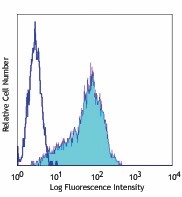
-

Human erythroleukemia cell line TF-1 stained with R1.302 PE
| Cat # | Size | Price | Quantity Check Availability | Save | ||
|---|---|---|---|---|---|---|
| 340404 | 100 tests | £247 | ||||
CD111, known as poliovirus receptor related 1 protein (PRR1), Nectin-1 and HveC, is a 75 kD type I transmembrane glycoprotein. A member of the nectin family and Ig gene superfamily, CD111 is broadly expressed on endothelial cells, epithelial cells, neuronal cells, megakaryocytes, and CD34-positive stem cells. CD111 functions as one of the herpes simplex virus 1 (HSV-1) and HSV-2 receptors and is an adhesion molecule involved in the formation of cell junctions.
Product DetailsProduct Details
- Verified Reactivity
- Human
- Antibody Type
- Monoclonal
- Host Species
- Mouse
- Immunogen
- Human Nectin-1 transfected NIH/3T3 cells
- Formulation
- Phosphate-buffered solution, pH 7.2, containing 0.09% sodium azide and BSA (origin USA)
- Preparation
- The antibody was purified by affinity chromatography, and conjugated with PE under optimal conditions.
- Concentration
- Lot-specific (to obtain lot-specific concentration, please enter the lot number in our Concentration and Expiration Lookup or Certificate of Analysis online tools.)
- Storage & Handling
- The antibody solution should be stored undiluted between 2°C and 8°C, and protected from prolonged exposure to light. Do not freeze.
- Application
-
FC - Quality tested
- Recommended Usage
-
Each lot of this antibody is quality control tested by immunofluorescent staining with flow cytometric analysis. For flow cytometric staining, the suggested use of this reagent is 5 µl per million cells in 100 µl staining volume or 5 µl per 100 µl of whole blood.
- Excitation Laser
-
Blue Laser (488 nm)
Green Laser (532 nm)/Yellow-Green Laser (561 nm)
- Application Notes
-
Additional reported applications (for relevant formats) include: immunoprecipitation, Western blot, immunohistochemical staining of frozen tissue sections, block HSV-1 and HSV-2 entry into cells
-
Application References
(PubMed link indicates BioLegend citation) -
- Cocchi F, et al. 1998. Proc. Natl. Acad. Sci. USA. 95:15700.
- Martinez WM and Spear PG. 2002. J. Virol. 76:7255.
- Reymond N,et al. 2004. J. Exp Med. 199:1331.
- Gillory LA, et al. 2013. PLoS One. 8:77753. PubMed
- Product Citations
-
- RRID
-
AB_2174152 (BioLegend Cat. No. 340404)
Antigen Details
- Structure
- 75 kD type I transmembrane glycoprotein, Nectin family, Ig superfamily
- Distribution
-
Myelomonocytic cells, megakaryocytes, CD34-positive stem cells, endothelial cells, epithelial cells, and neuronal cells.
- Function
- Adhesion, receptor for Herpes simplex Virus 1 (HSV-1) and HSV-2
- Ligand/Receptor
- Nectin-1, -2, -3, and -4, CD155, HSV-1 and HSV-2
- Cell Type
- Megakaryocytes, Hematopoietic stem and progenitors, Endothelial cells, Epithelial cells
- Biology Area
- Cell Biology, Immunology, Neuroscience, Synaptic Biology
- Molecular Family
- Adhesion Molecules, CD Molecules
- Antigen References
-
1. Zola h, et al. 2007. Leukocyte and Stromal Cell Molecules:The CD Markers. Wiely-Liss A John Wiley & Sons Inc, Publication.
2. Simpson SA, et al. 2005. J. Neuroviral. 11:208.
3. Akhtar J, et al. 2008. Ophthalmol. Vis. Sci. 49:4026. - Gene ID
- 5818 View all products for this Gene ID
- Specificity (DOES NOT SHOW ON TDS):
- CD111
- Specificity Alt (DOES NOT SHOW ON TDS):
- CD111
- App Abbreviation (DOES NOT SHOW ON TDS):
- FC
- UniProt
- View information about CD111 on UniProt.org
Related Pages & Pathways
Pages
Related FAQs
- What type of PE do you use in your conjugates?
- We use R-PE in our conjugates.
Other Formats
View All CD111 Reagents Request Custom Conjugation| Description | Clone | Applications |
|---|---|---|
| Purified anti-human CD111 (Nectin-1) | R1.302 | FC,IHC-P,IP,WB |
| PE anti-human CD111 (Nectin-1) | R1.302 | FC |
Customers Also Purchased
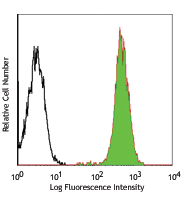
Compare Data Across All Formats
This data display is provided for general comparisons between formats.
Your actual data may vary due to variations in samples, target cells, instruments and their settings, staining conditions, and other factors.
If you need assistance with selecting the best format contact our expert technical support team.
-
Purified anti-human CD111 (Nectin-1)
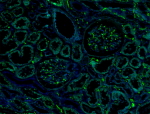
Human paraffin embedded kidney tissue was stained with purif... -
PE anti-human CD111 (Nectin-1)
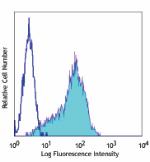
Human erythroleukemia cell line TF-1 stained with R1.302 PE
 Login / Register
Login / Register 










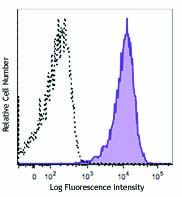
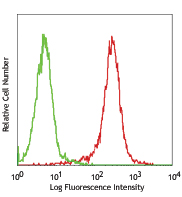




Follow Us